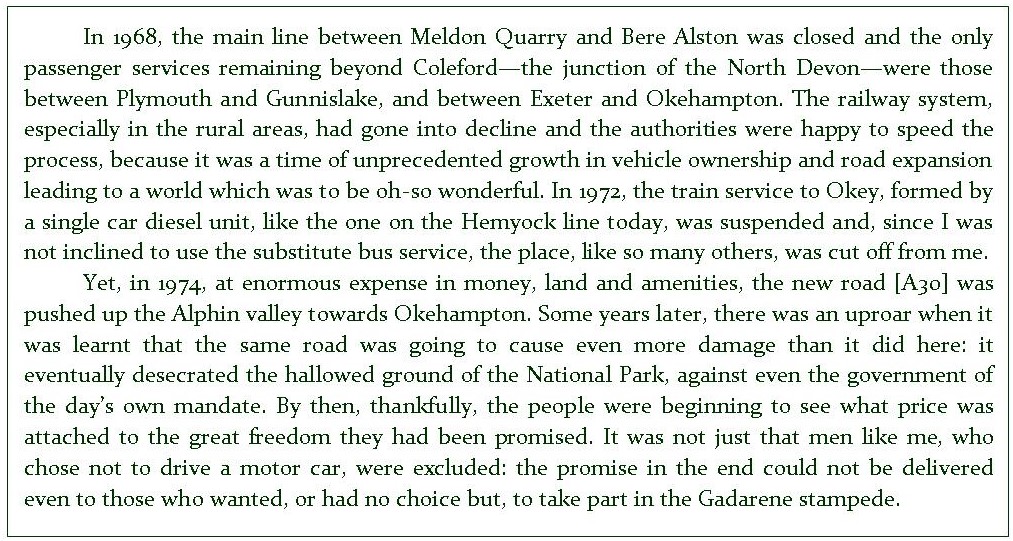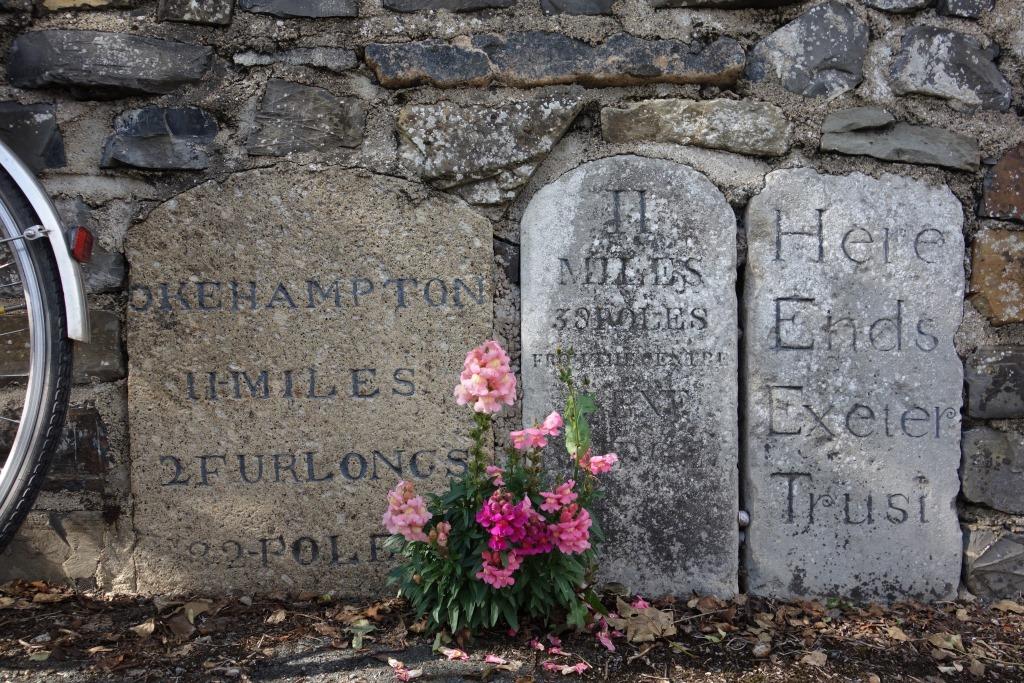More on turnpikes
There are six turnings leading to South Zeal off the old A30, the first and last marking the extent of the turnpike bypass of the village. This is a road along which the scout has driven the railway’s utilicons and ridden his bicycle many times, yet shamefully he could not remember ever diverting to South Zeal.
To remedy this, one Sunday, he swept around the lanes, spoilt by the screeching of the A30 dual carriageway, and took in South Tawton before free-wheeling slowly down South Zeal’s delightful former main road. As always, the scout wished that he could be very much more delighted by seeing the village without the blight of cars.
The scout should have checked the opening hours of the Sticklepath Stores and Cafe. Finding the place closed, he continued to Okehampton to buy some lunch, after which he took the fourth turning for South Zeal, right and right again, and passed beneath the turnpike at Ramsley. Though commonplace now, road over road bridges were rare in the 19th century.
Fron Whiddon Down to just beyond milestone 10 of the Okehampton turnpike is lost beneath the dual carriageway. After the scout picked up the old road again, he thought he was right for Cheriton Bishop and had the distant, as it were, for the descent through Crockernwell.
It was here that it came to the scout that he had last ridden this section of the old A30 when it was the A30 and so he pulled up smartly in the village.
He remembered riding out from Exeter to see the new dual carriageway being built and loudly cursing the roadmen: “Will you desist? You do the devil’s work!” At least, that’s how the scout would like to remember it.
Twenty years later, the railway’s scribe would rail against them more rationally in A Journey in Time.

The scout was very glad that he had decided to stop, for he soon noticed this splendid assembly of relics set in a wall, denoting the meeting place of the Okehampton and Exeter Turnpike Trusts.

The Exeter milestone reads: “11 MILES 39 POLES FROM THE CENTRE OF EXE BRIDGE.”
It was at Crockernwell, very early on 5th November, 1805, that Lieut. Lapenotiere, rushing the news of Trafalgar to the Admiralty in London, stopped for his post-chaise to have a change of horses, the sixth such change since leaving Falmouth the day before. The news was delivered early the following morning. Perhaps the post horses and postillion were provided by the Royal Hotel. Nearside post horses were ridden while the offside one was kept in hand.
As remarked upon in Chenson (36), there are a hundred railways in normal times putting on a steam locomotive show of one kind or another, but there is very little reenactment of the spectacle that once would have been seen at a wayside inn, as two or four horses, fed, watered and rested, were brought out and harnessed; and nothing is made of the equine economy and organization there must have been which made doing this at a moment’s notice a normal event.
